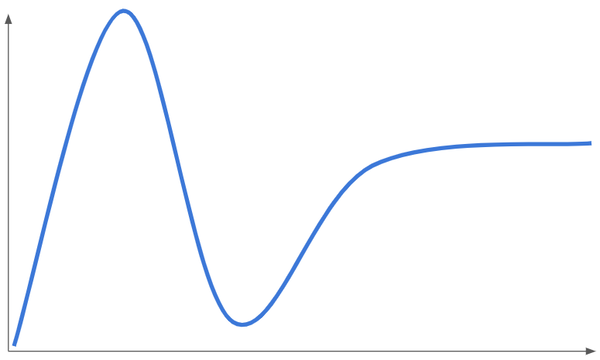 Generative AI is following the hype cycle
Generative AI is following the hype cycle
As an industry, we are finding where expectation meets reality with generative AI.
Generative AI has been all the rage since ChatGPT was first launched in November 2022. AI quickly became the focus point for many organizations, some of whom created competing generative AI systems including Microsoft Copilot (Microsoft is part owner of OpenAI) and Google Gemini.
It's important to realize that generative AI has only been on the scene for a year and a half, yet has captivated so many in that short time. And in doing so, generative AI is following the hype cycle of all new technologies.
Gartner's hype cycle
Research corporation Gartner developed a model they call the "Hype Cycle." The cycle is a visual representation of how audiences tend to react to new technology development. It is not a science, but the hype cycle provides a good reference point for most new technologies.
In Gartner's hype cycle model, new technologies start from a "spark" or "trigger" where they are virtually unknown. Some technologies never gain much traction, but those that do get attention (and especially those with large investments behind them) tend to explode in popularity. At this point, many innovations become overinflated; audiences ascribe much higher expectations about how that technology will solve all problems, large and small.
But most technologies don't really merit this level of excitement, so after a little while, the level of expectation falls. After audiences get an early experience in using the technology and learn that it can do versus what it promises to do, the excitement tends to fall.
If the technology has long-term potential, then expectations tend to "level out" over time, eventually reaching a "level point" or "plateau" where expectation meets reality.
This cycle of "trigger" to "inflated expectations" and "disillusionment" and "rising expectations" to "plateau" can be represented visually in Gartner's hype cycle:

Generative AI is following the hype cycle
This hype cycle effectively represents the level of excitement we've observed in generative AI: at first, everyone lost their minds in excitement about what generative AI might do and what problems AI might solve. In those first few months and over the next year, many users created ChatGPT accounts to see what AI could do. Some used AI for amusing experiments, such as asking ChatGPT to write a short story. Others used AI for academic experiments, like crafting a series of prompts to write a book. And others asked AI for help in writing performance goals or summaries of articles.
Eventually, generative AI met with crashing reality, where these inflated expectations failed. For example, several attorneys were sanctioned (and nearly disbarred) because they relied on ChatGPT to write cases for them. One used OpenAI's ChatGPT for research in a medical malpractice lawsuit and did not realize ChatGPT had invented case citations. Another attorney similarly used AI to write a case, not realizing the other cases cited in the brief were conjured up by ChatGPT. At Coaching Buttons, we also cautioned about over-reliance on AI to create digital twins of CEOs, to make decisions in Zoom meetings. In these examples and others, AI had clearly reached a new low in disillusionment.
But AI is improving. These lessons have taught most people about what AI is actually capable of, and where its limitations actually begin and end. We are starting to level off to a new norm. In effect, we are now in the "rising expectations" to find a new "plateau" where expectation meets reality. So that's the next step: figuring out the new norm.
